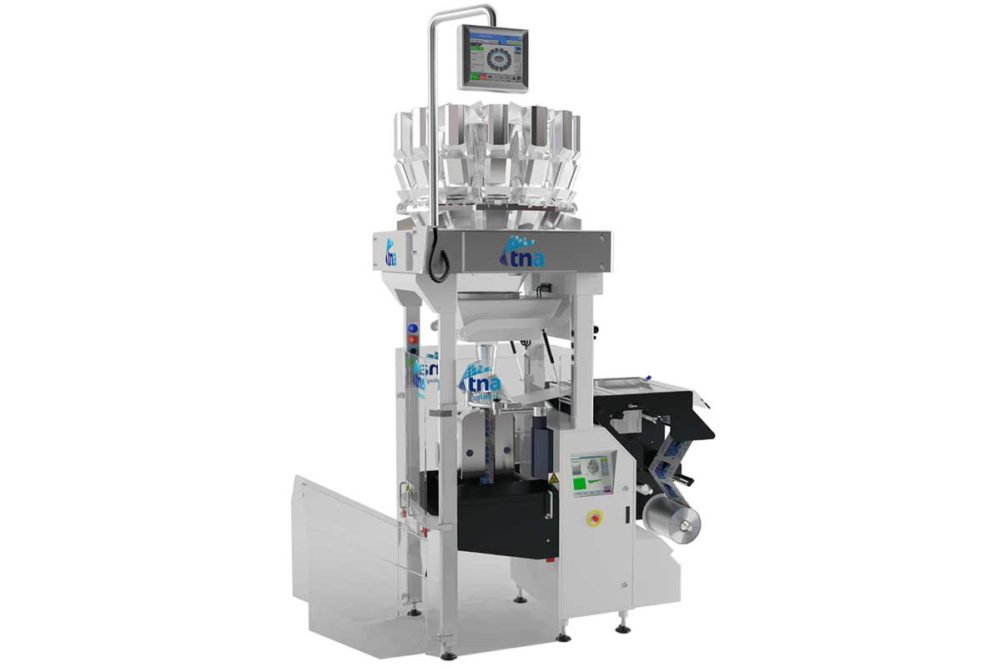Hygienically designed hardware can streamline changeovers and minimize downtime, even when packaging snacks of varying weights.
“When it comes to improving cleanliness during the weighing and packaging process, the construction material of the equipment is key,” said Anurag Mitra, product marketing manager of packaging, TNA Solutions.
Weighing and scaling equipment is most commonly being constructed today using stainless steel, a material that can withstand aggressive fats, oils and flavors. The metal is also strong, making it less likely to develop scratches and other surface imperfections that could potentially house bacteria.
The TNA intelli-weigh omega series also features an IP67 waterproof rating, making it pressure-washer safe for removal of product residue during changeovers.
Another consideration for sanitary design and ensuring food safety is in the physical design of the equipment itself.
“Leading food processing equipment manufacturers are continually searching for ways to make components easier to clean and sanitize, by constructing systems with as few moving parts as possible or specially bonded seams to limit dirt accumulation,” Mr. Mitra said.
This can include what he called “seemingly simple design elements,” such as the polygon-shaped weighing buckets of the TNA intelli-weigh omega series.
Heat and Control’s Ishida systems also use physical design for sanitization.
“The parts are easily removed for cleaning, and the sloped design ensures there are no ledges or crevices for bacteria and debris build up,” said Jeff Almond, industry manager of snack food packaging, Heat and Control.
The company also offers IP69K for washdown applications, and its RV series is environmentally friendly, consuming 20% less power than comparable models, he said.
At Mettler-Toledo, sloped surfaces and stainless steel conveyors mitigate hygienic risk, said Adam Griffen, checkweigher and vision product manager, Mettler-Toledo.
“For example, avoiding areas where food can get trapped in the conveyor by means of product zones and providing a welded design rather than a bolted assembly,” he said. “Additionally, proper processing and supply chain provides traceability and compliance for food contact materials.”
This article is an excerpt from the July 2021 issue of Baking & Snack. To read the entire feature on Weighing & Scaling, click here.





